|
This is the Gemini 11 spacecraft which was an early NASA
human spaceflight program and helped get ready for the Apollo moon
landings. The Gemini missions were flown in 1965 and
1966 and it held two astronauts. Gemini was named after a constellation
and the name means "twins." This name was used because the Gemini
capsule would carry two people. Each Gemini mission carried the two
astronauts into Earth orbit for periods ranging from 5 hours to 14 days.
|
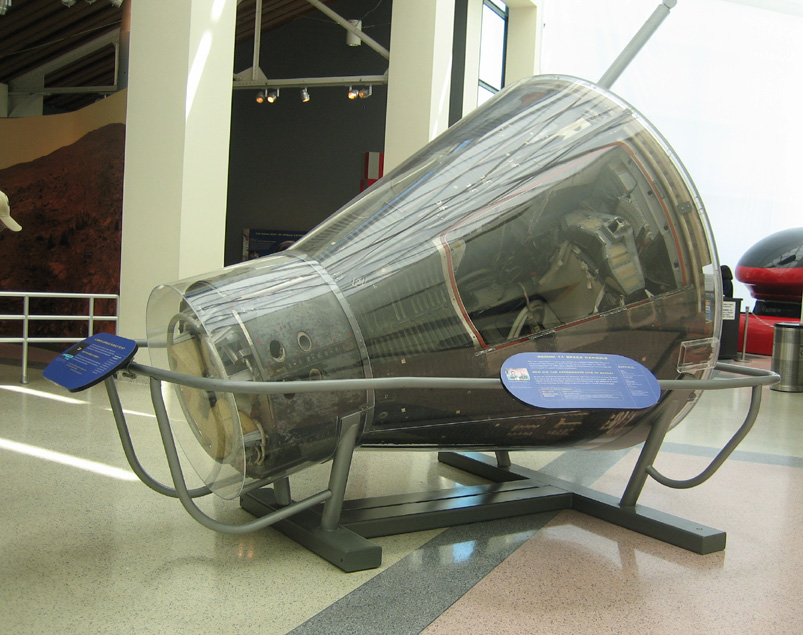
|
|
The heat shield is 7' 8" in diameter,
is made from resign like material and is heated by friction of the atmosphere
upon reentry. The outer surface vaporized from a solid to a gas with
temps exceeding 3,500 degrees F. As it burned away it carries away heat
and you can see the carbon residue it left behind.
Gemini's heat
shield derived from ballistic missile warhead technology. The dish
shaped shield creates a shock wave in the atmosphere that holds off
most of the heat. The rest dissipated by ablation,
which means that it was designed to melt and erode away as it heated
up.
Ablative heat shields are not reusable.
|
|
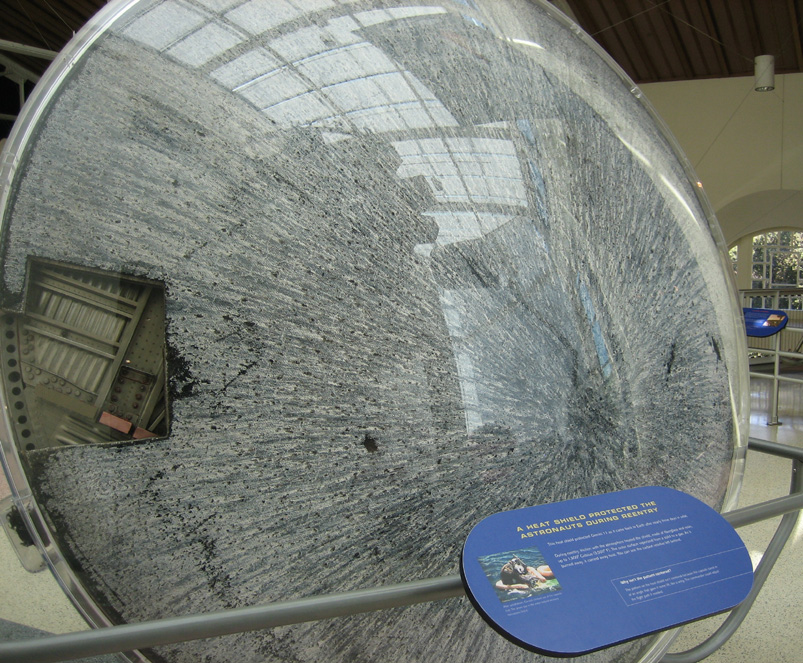 |
|
Here is a close-up of what the heat shield looks like.
The substance of the Gemini heat shield is a paste like silicone
elastomer material which hardens after being poured into a honeycomb
form. Honeycomb structures are used throughout early and later aircrafts
such as wing spars, bodies and tail sections because it's lightweight
and very strong.
|
|
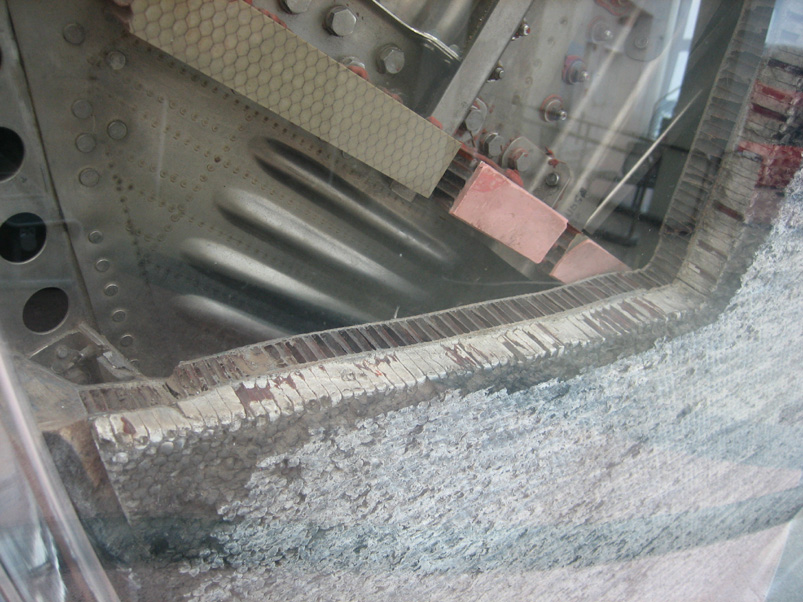 |
Click for a larger image.
|
|
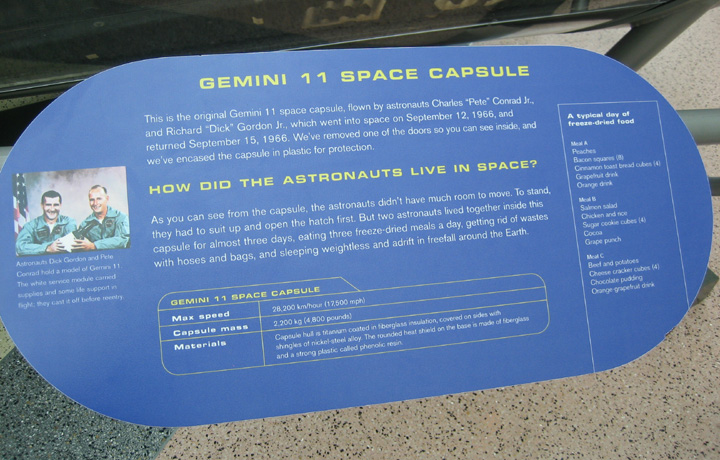 |
Click for a larger image.
|
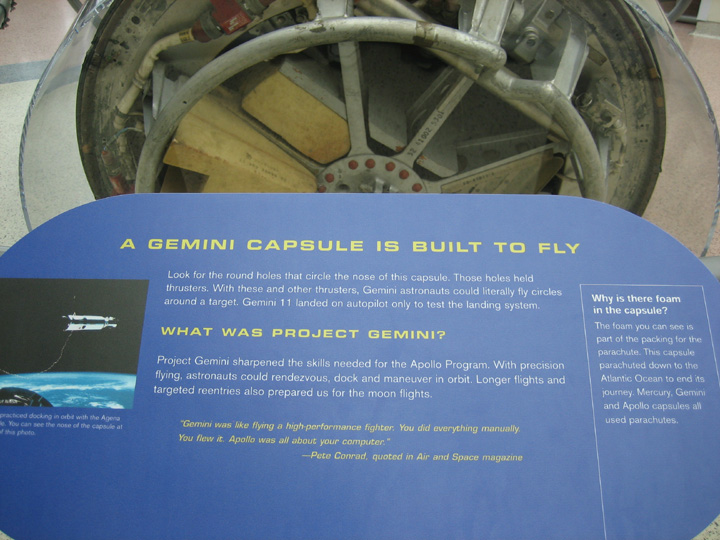
|
|
This is the Apollo 18 command module that was built to
go to the moon but because of budget cuts it didn't. It held
three astronauts but would have been very cramped after looking inside
it. The astronauts had about 210 cubic feet of habitable space, the rest
of the inside was dedicated to control panels and displays. The name
Apollo is derived from Greek, and it means 'destroyer'. According to
historians, Apollo was a Roman god of light, music and poetry.
|
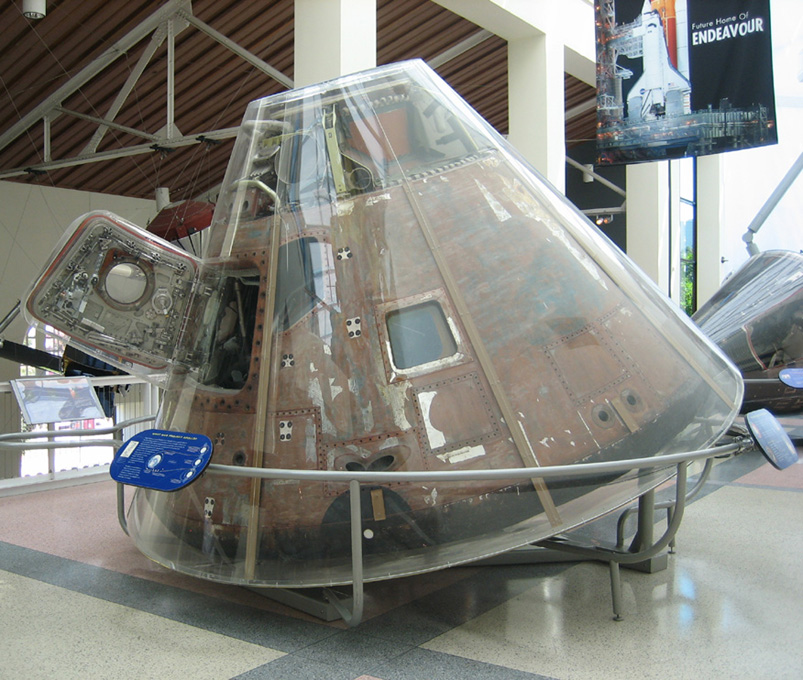
|
I had a hard time trying to get a decent picture with the reflection
from the lights bouncing off the plastic that covers the spacecraft. The
inside structure is made of sheet aluminum which is lightweight but very
thin.
|
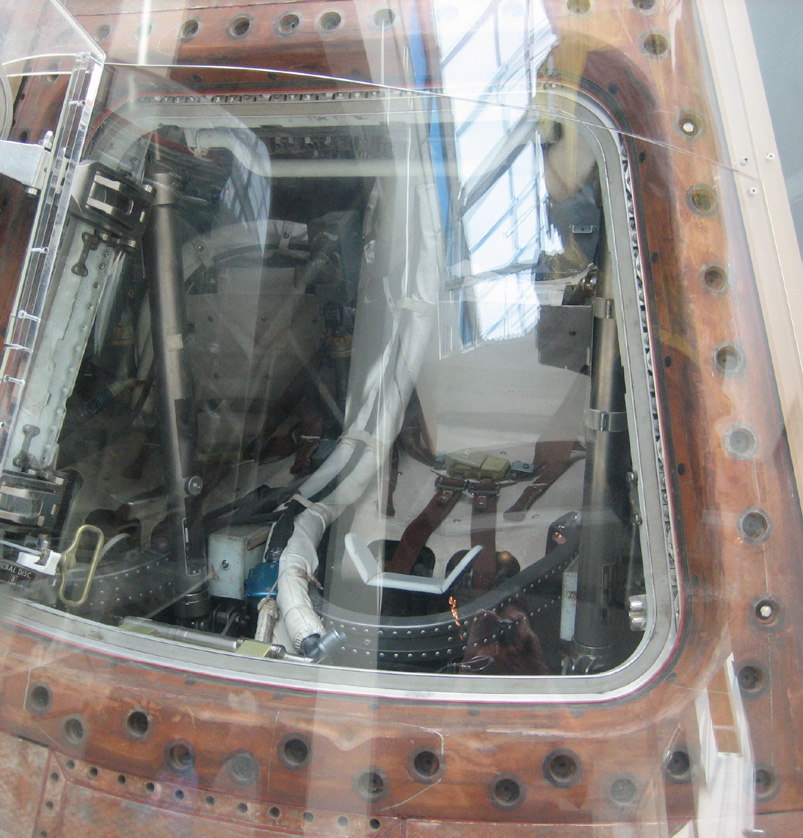
|
|
Everything that you see here are one-off pieces made just for the Apollo
spacecraft. In other words you aren't going to the hardware store and buy
anything that you see here.
Click for a large image.
|
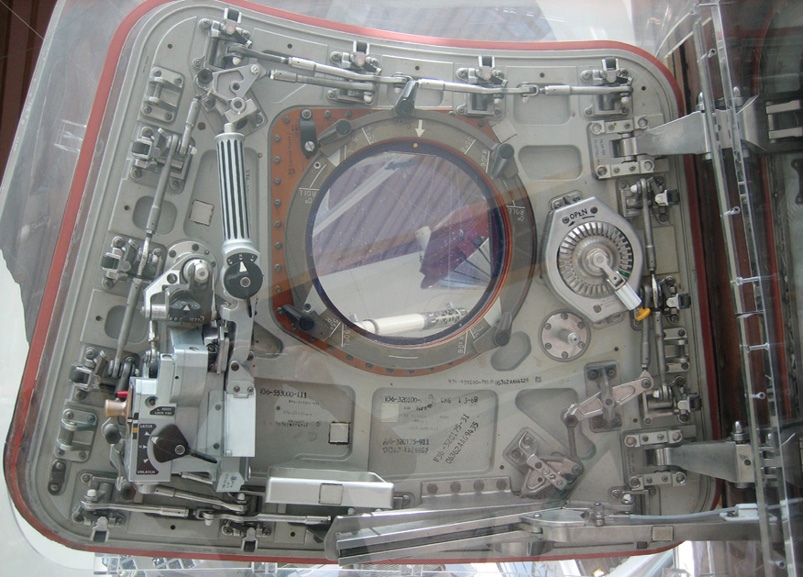
|
The machine work on everything that I could see was impressive and I
would have loved to have made parts for anything NASA.
|
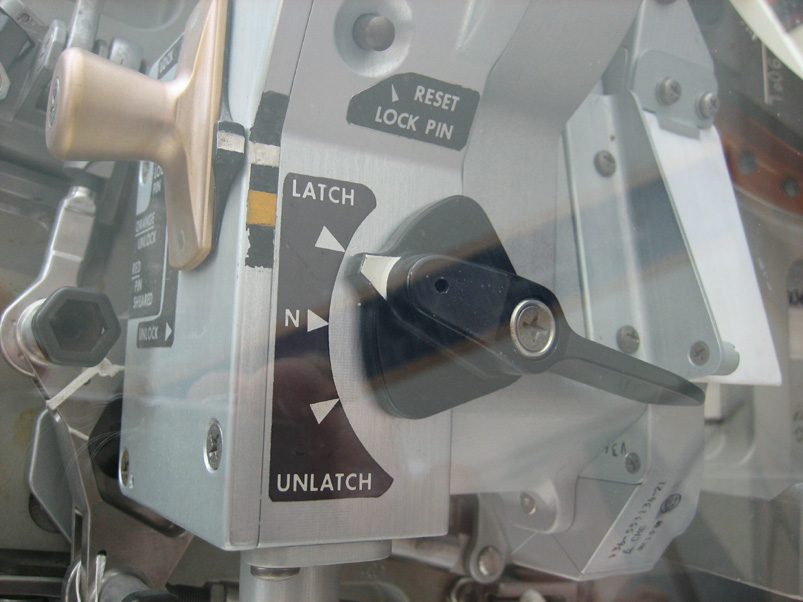
|
|
Note the part number or serial on the middle shaft and
above that is what looks to be an ink stamp certifying the part passed
Fluorescent Penetrant Inspection (FPI) which means it was checked for
any imperfections or hairline cracks of any kind. FPI is used for
material that isn't magnetic like aluminum or some stainless steels which I
think those shafts are the latter. If they were made out of something
magnetic like steel, then the inspection process would have been
Magnetic Particle Inspection which checks for the same basic thing that FPI does
but in a different way.
|
|
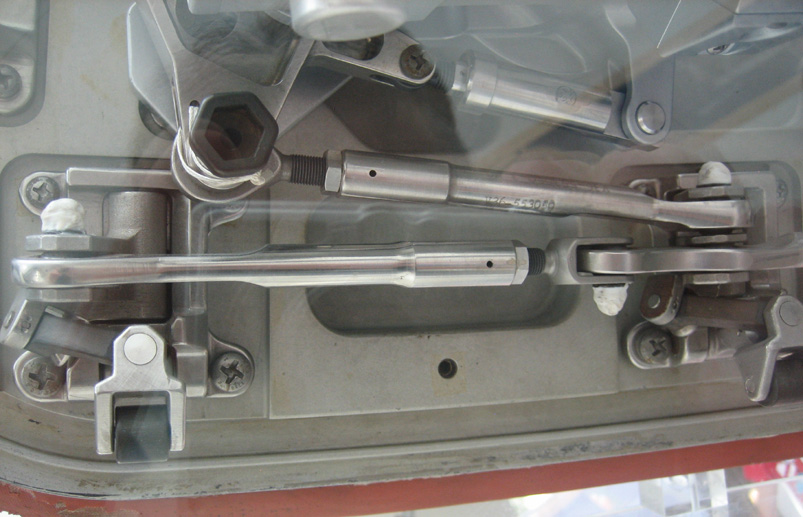
|
|
1
2
3
4
5
6
7
8
9
10
11
12 |